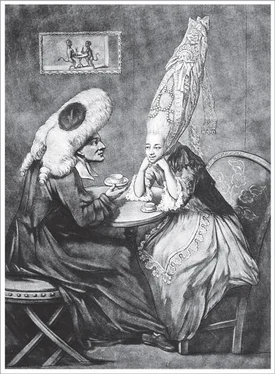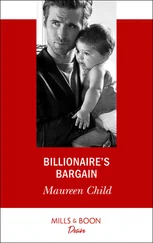Bill Bryson - At Home
Здесь есть возможность читать онлайн «Bill Bryson - At Home» весь текст электронной книги совершенно бесплатно (целиком полную версию без сокращений). В некоторых случаях можно слушать аудио, скачать через торрент в формате fb2 и присутствует краткое содержание. Жанр: Старинная литература, на английском языке. Описание произведения, (предисловие) а так же отзывы посетителей доступны на портале библиотеки ЛибКат.
- Название:At Home
- Автор:
- Жанр:
- Год:неизвестен
- ISBN:нет данных
- Рейтинг книги:4 / 5. Голосов: 1
-
Избранное:Добавить в избранное
- Отзывы:
-
Ваша оценка:
- 80
- 1
- 2
- 3
- 4
- 5
At Home: краткое содержание, описание и аннотация
Предлагаем к чтению аннотацию, описание, краткое содержание или предисловие (зависит от того, что написал сам автор книги «At Home»). Если вы не нашли необходимую информацию о книге — напишите в комментариях, мы постараемся отыскать её.
At Home — читать онлайн бесплатно полную книгу (весь текст) целиком
Ниже представлен текст книги, разбитый по страницам. Система сохранения места последней прочитанной страницы, позволяет с удобством читать онлайн бесплатно книгу «At Home», без необходимости каждый раз заново искать на чём Вы остановились. Поставьте закладку, и сможете в любой момент перейти на страницу, на которой закончили чтение.
Интервал:
Закладка:
Mrs. Beeton appears to have been unacquainted with ice as a preservative, but we may safely assume that she wouldn’t have liked it, for she didn’t like chilled things generally. “The aged, the delicate and children should abstain from ices or cold beverages,” she wrote. “It is also necessary to abstain from them when persons are very warm, or immediately after taking violent exercise, as in some cases they have produced illnesses which have ended fatally.” A great many foods and activities had fatal consequences in Mrs. Beeton’s book.
For all her matronly airs, Mrs. Beeton was just twenty-three when she began the book. She wrote it for her husband’s publishing company, where it was issued as a partwork in thirty-three monthly installments beginning in 1859 (the year that also saw the publication of Charles Darwin’s On the Origin of Species ) and produced as a single volume in 1861. Samuel Beeton had already made quite a lot of money from publishing Uncle Tom’s Cabin , which was as much of a sensation in Britain as in America. He also started some popular magazines, including the Englishwoman’s Domestic Magazine (1852), which had many innovations—a problem page, a medical column, dress patterns—still often found in women’s magazines today.
Nearly everything about The Book of Household Management suggested it was done in carelessness and haste. The recipes were mostly contributed by readers, and nearly all the rest was plagiarized. Mrs. Beeton stole shamelessly from the most obvious and traceable sources. Whole passages are lifted verbatim from the autobiography of Florence Nightingale. Others are taken straight from Eliza Acton. Remarkably, Mrs. Beeton didn’t even trouble to adjust gender, so that one or two of her stories are related in a voice that, disconcertingly and bewilderingly, can only be male. Organizationally, the whole is a mess. She devotes more space to the making of turtle soup than to breakfast, lunch, and supper combined, and never mentions afternoon tea at all. The inconsistencies are little short of spectacular. On the very page on which she lengthily explicates the tomato’s dangerous failings (“it has been found to contain a particular acid, a volatile oil, a brown, very fragrant extracto-resinous matter, a vegeto-mineral matter, muco-saccharine, some salts, and, in all probability, an alkaloid”), she gives a recipe for stewed tomatoes, which she calls a “delicious accompaniment,” and notes, “It is a wholesome fruit and digests easily. Its flavour stimulates the appetite and it is almost universally approved.”
Despite its manifold peculiarities, Mrs. Beeton’s book was a huge and lasting success. Its two unimpeachable virtues were its supreme confidence and its comprehensiveness. The Victorian era was an age of anxiety, and Mrs. Beeton’s plump tome promised to guide the worried homemaker through every one of life’s foamy shoals. Flicking through the pages, the homemaker could learn how to fold napkins, dismiss a servant, eradicate freckles, compose a menu, apply leeches, make a Battenberg cake, and restore to life someone struck by lightning. Mrs. Beeton elucidated in precise steps how to make hot buttered toast. She gave cures for stammering and for thrush; discussed the history of lambs as a sacrifice; provided an exhaustive list of the many brushes (stove brush, cornice brush, banister broom, whisk broom, carpet broom, crumb brush—some forty in all) that were needed in any house that aspired to hygienic respectability; and discussed the dangers of making friendships in haste and the precautions to be taken before entering a sickroom. It was an instruction manual that could be followed religiously, and that was exactly what people wanted. Mrs. Beeton was decisive on every manner of topic—the domestic equivalent of a drill sergeant.
She was just twenty-eight when she died, of puerperal fever, eight days after giving birth for the fourth time, but her book lived on and on. It sold more than two million copies in its first decade alone and continued to sell steadily well into the twentieth century.
Looking back now, it is nearly impossible to get a fix on Victorians and their diet.
For a start, the range of foods was dazzling. People, it seems, ate practically anything that stirred in the undergrowth or could be hauled from water. Ptarmigan, sturgeon, larks, hare, woodcock, gurnet, barbel, smelts, plover, snipe, gudgeon, dace, eels, tench, sprats, smelts, turkey poults, and many more largely forgotten delicacies featured in Mrs. Beeton’s many recipes. Fruits and vegetables seemed almost infinite in number. Of apples alone there were, almost unbelievably, more than two thousand varieties to choose from—Worcester pearmain, Beauty of Bath, Cox’s orange pippin, and so on in long and poetic vein. At Monticello in the early nineteenth century Thomas Jefferson grew 23 different types of peas and more than 250 kinds of fruits and vegetables. (Unusual for his day, Jefferson was practically a vegetarian and ate only small portions of meat as a kind of “condiment.”) As well as gooseberries, strawberries, plums, figs, and other produce well known to us today, Jefferson and his contemporaries also enjoyed tayberries, tansy, purslane, Japanese wine berries, damsons, medlars, seakale, screwpine, rounceval peas, skirrets (a kind of sweet root), cardoons (a thistle), scorzonera (a type of salsify), lovage, turnip-cabbage, and scores more that nowadays are encountered rarely or not at all. Jefferson, incidentally, was also a great adventurer with foods. Among his many other accomplishments, he was the first person in America to slice potatoes lengthwise and fry them. So as well as being the author of the Declaration of Independence, he was also the father of the American French fry.
Part of the reason people could eat so well was that many foods that we now think of as delicacies were plenteous then. Lobsters bred in such abundance around Britain’s coastline that they were fed to prisoners and orphans or ground up for fertilizer; servants sought written agreements from their employers that they would not be served lobster more than twice a week. Americans enjoyed even greater abundance. New York Harbor alone held half the world’s oysters and yielded so much sturgeon that caviar was set out as a bar snack. (The idea was that salty food would lead people to drink more beer.) The size and variety of dishes and condiments on offer was almost breathtaking. One hotel in New York had 145 dishes on the menu in 1867. A popular American recipe book of 1853, Home Cookery , casually mentions adding a hundred oysters to a pot of gumbo to “enhance” it. Mrs. Beeton provided no fewer than 135 recipes just for sauces.
Remarkably, Victorian appetites were really comparatively restrained. The golden age of gluttony was actually the eighteenth century. This was the age of John Bull, the most red-faced, overfed, coronary-ready icon ever created by any nation in the hope of impressing other nations. It is perhaps no coincidence that two of the fattest monarchs in British history did a great deal of their eating in the 1700s. The first was Queen Anne. Although paintings of Anne always tactfully make her look no more than a little fleshy, like one of Rubens’s plump beauties, she was in fact jumbo-sized—“exceedingly gross and corpulent” in the candid words of her former best friend the Duchess of Marlborough. Eventually Anne grew so stout that she could not go up and down stairs. A trapdoor had to be cut in the floor of her rooms at Windsor Castle through which she was lowered, jerkily and inelegantly, by means of pulleys and a hoist to the state rooms below. It must have been a most remarkable sight to behold. When she died, she was buried in a coffin that was “almost square.” Even more famously enormous was the prince regent, the future George IV, whose stomach when let out of its corset reportedly spilled to his knees. By the time he was forty his waist was more than four feet around.
Читать дальшеИнтервал:
Закладка:
Похожие книги на «At Home»
Представляем Вашему вниманию похожие книги на «At Home» списком для выбора. Мы отобрали схожую по названию и смыслу литературу в надежде предоставить читателям больше вариантов отыскать новые, интересные, ещё непрочитанные произведения.
Обсуждение, отзывы о книге «At Home» и просто собственные мнения читателей. Оставьте ваши комментарии, напишите, что Вы думаете о произведении, его смысле или главных героях. Укажите что конкретно понравилось, а что нет, и почему Вы так считаете.












